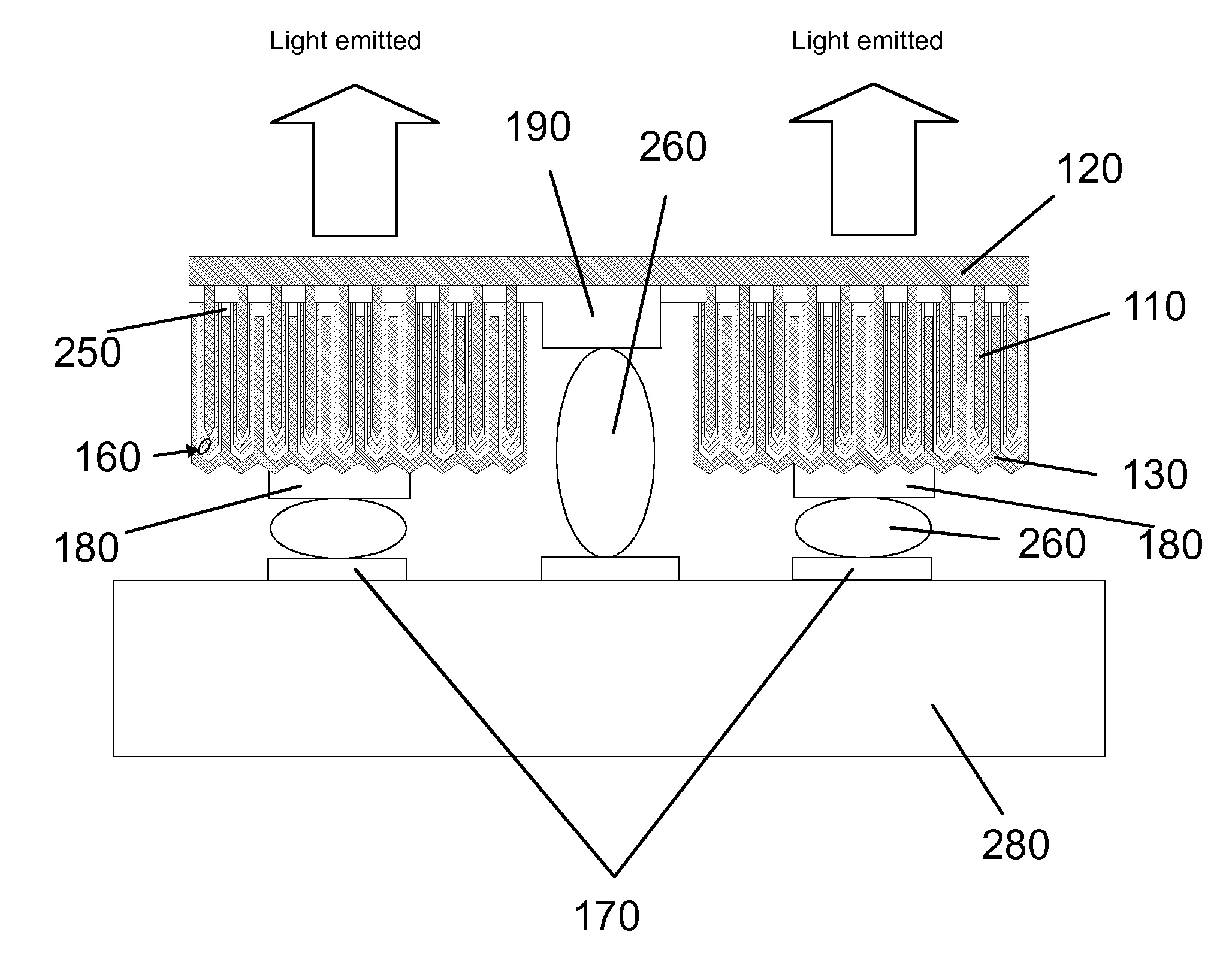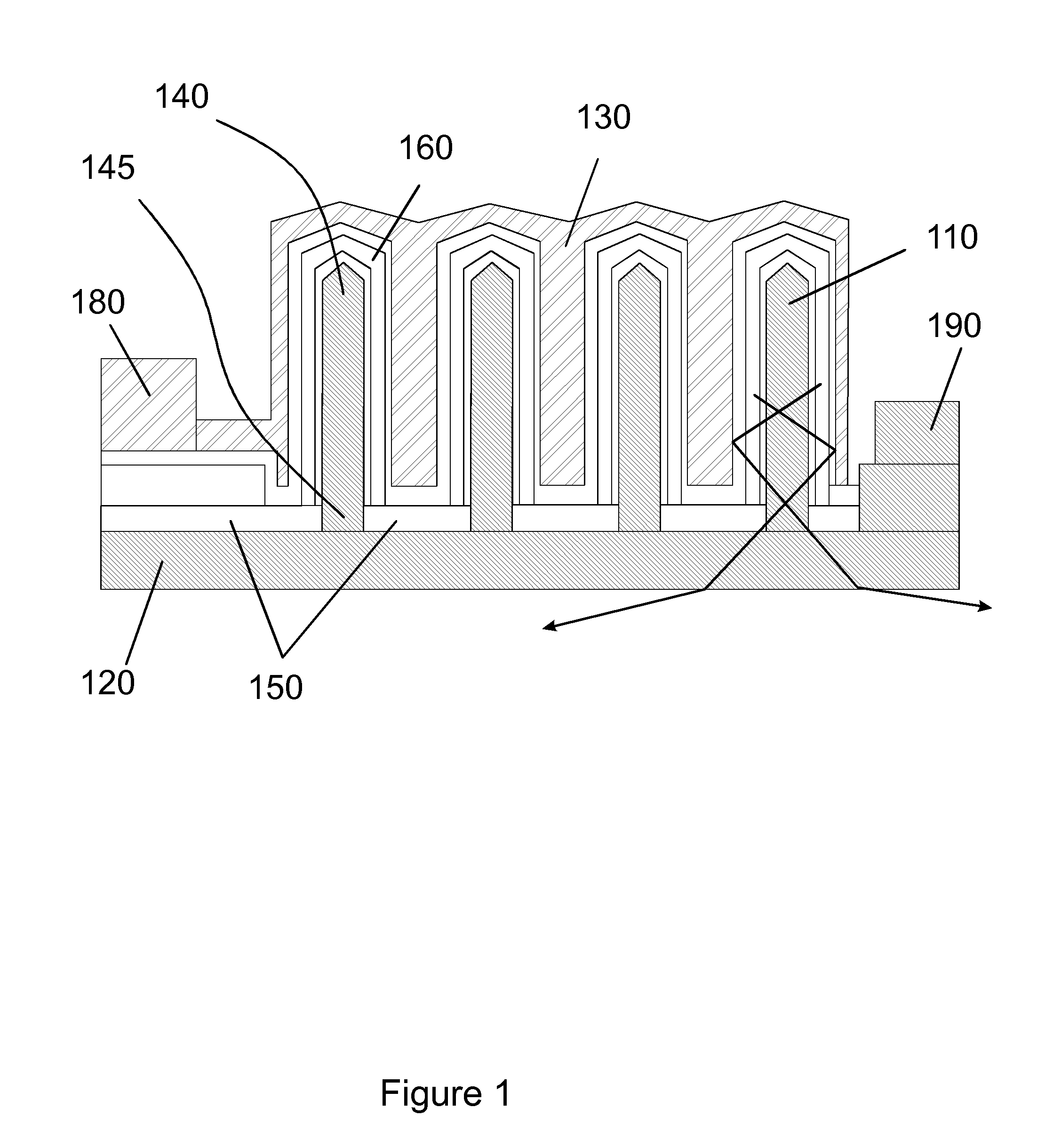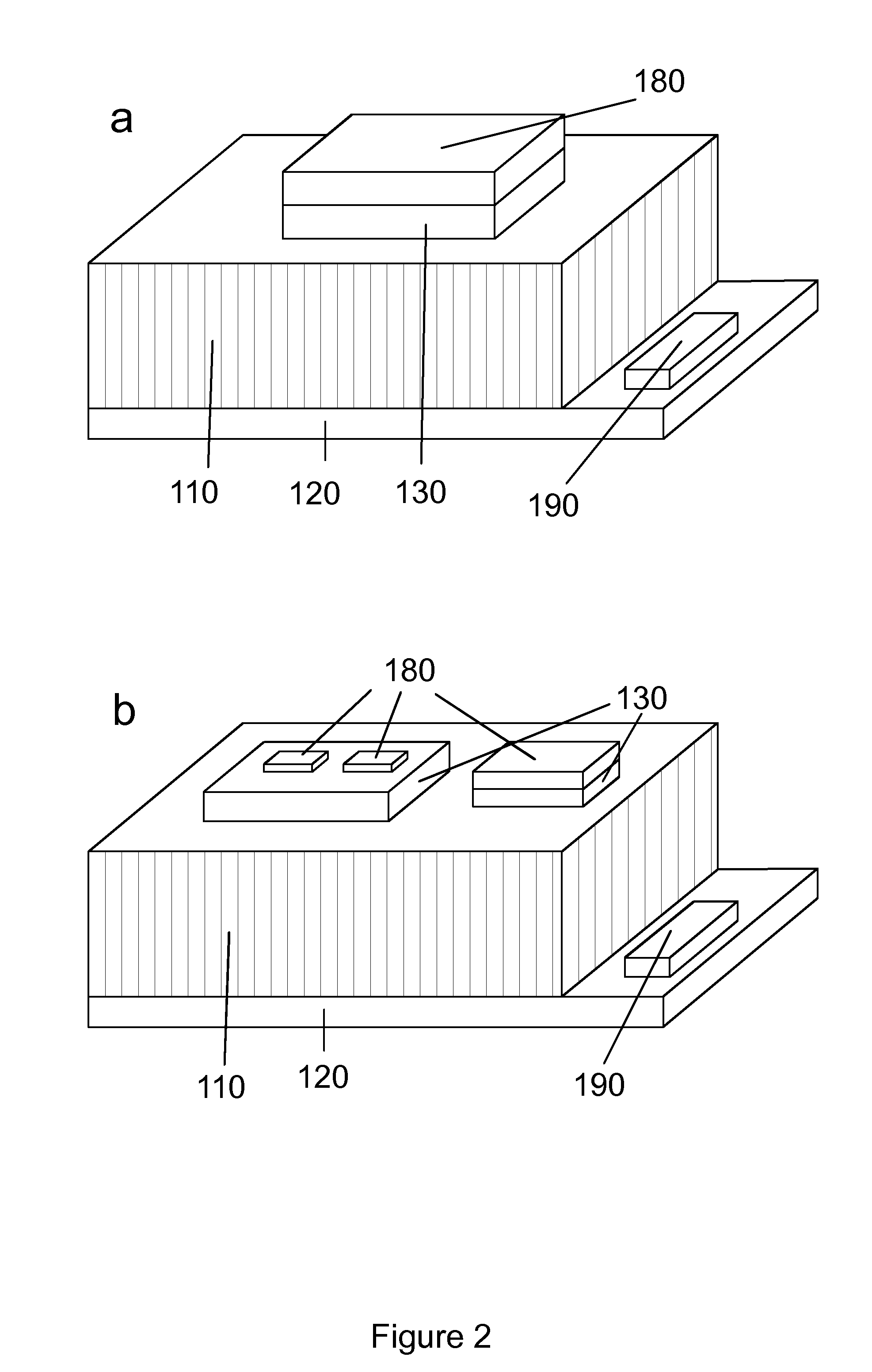Nanostructured LED
- Summary
- Abstract
- Description
- Claims
- Application Information
AI Technical Summary
Benefits of technology
Problems solved by technology
Method used
Image
Examples
Embodiment Construction
[0023]The embodiments to be described in the following are all based on nanostructured LED / LED's, and a prior art version of such can be found in WO2008048704.
[0024]In the following discussion the term nanostructure or nanoelement is intended to mean a structure having at least two dimensions not greater than about 1 μm.
[0025]In one embodiment, FIG. 1, of a nanostructured LED according to the invention, the nanowires 110 protrude from a substrate or a buffer layer 120 deposited on a substrate (the substrate not shown in the figure), where the substrate or buffer layer 120 can be Si, Ge, Al2O3, SiC, Quartz, glass, GaN or any other material suitable for nanowire growth and further processing. The buffer layer 120 can be made of a material different than the substrate material. The buffer layer 120 is usually chosen so as to match the desired nanowire material, and thus form a growth base for the nanowires later in the process. That means that the buffer layer 120 is chosen so that the...
PUM
| Property | Measurement | Unit |
|---|---|---|
| transparent | aaaaa | aaaaa |
| serial resistance | aaaaa | aaaaa |
| electrical current transport | aaaaa | aaaaa |
Abstract
Description
Claims
Application Information
 Login to View More
Login to View More - R&D
- Intellectual Property
- Life Sciences
- Materials
- Tech Scout
- Unparalleled Data Quality
- Higher Quality Content
- 60% Fewer Hallucinations
Browse by: Latest US Patents, China's latest patents, Technical Efficacy Thesaurus, Application Domain, Technology Topic, Popular Technical Reports.
© 2025 PatSnap. All rights reserved.Legal|Privacy policy|Modern Slavery Act Transparency Statement|Sitemap|About US| Contact US: help@patsnap.com



